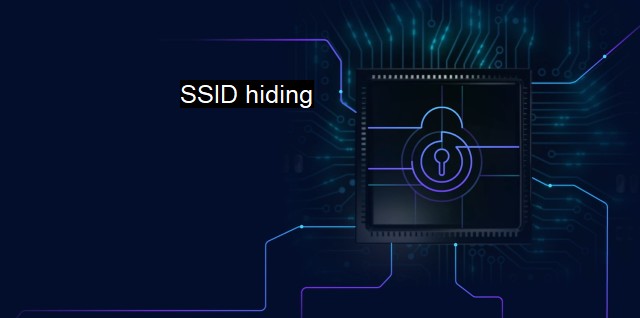What is SSID hiding?
The Pros and Cons of Hidden SSIDs: Understanding the Weaknesses and Security Implications of a Controversial Wireless Technique
SSID hiding is a technique used in the realm of wireless networking for security purposes. Standing for Service Set Identifier, the SSID is the name that is allocated to a specific Wi-Fi network, making it identifiable to the devices searching for wireless connections in its range. How is this related to cybersecurity and antiviruses? SSID hiding is employed as a measure to boost network security, marking a development in antivirus solutions from regular software applications that protect individual devices, towards functions that support the safeguarding of entire networks.Hiding an SSID is achieved by not broadcasting the network name into the open air. While this might seem counterproductive for users, it's beneficial for network security, as it essentially makes the network invisible to devices that aren't already aware of it. When SSID broadcast is enabled, any device within range can see the network and can try to connect to it. While they would still need the correct credentials to access the network, this exposure raises security concerns, as it opens the door to potential hacker attacks.
In this light, SSID hiding functions as a form of obscurity. Its prime motivation is to serve as a first line of defense against cyber threats of various kinds. Simply put, a hacker can’t attack what they cannot see. Thus, when coupled with meticulous password and user management, such a barrier can enhance the security of a wireless network effectively.
It is important to note that SSID hiding isn't sufficient as a standalone security measure. Hiding the network only provides a veil of invisibility to casual users and less determined intruders. It doesn't fully secure a network against advanced or determined attackers because the SSID info can be discovered when a device connects to the wireless network, something that can be picked up by nearby snoopers with more advanced equipment or software. Therefore, SSID hiding is most effective when combined with other security measures such as sophisticated Wi-Fi encryption algorithms like WPA3 and consistent software updates for addressing potential vulnerabilities.
Interestingly, SSID hiding can help to shield networks from certain types of malware. Even if the malware manages to infect a device, it wouldn't be able to spread onto the network if the malware doesn't recognize that the network exists. Thus, SSID hiding can be an additional supporting pillar in comprehensive antivirus strategies focused on preventing the blanket spread of viruses and malware throughout a network.
One potential downside of SSID hiding, though, is the slight inconvenience it may cause to users. Since the network is not openly broadcast, users would need to manually input the SSID to connect. In a large and often-changing group of users, such as in a public organization, this could translate to sizeable additional effort and support for device setup. This could make SSID hiding less applicable or worthwhile in such contexts.
SSID hiding is a stealth technique employed in the wireless networking arena to provide an initial layer of security. When implemented effectively, it can form part of a composite security measure coupled with strong network credentials, advanced encryption, ordered device management and associate antivirus strategies. An understanding of SSID hiding provides a window into the broader complexity and subtlety of network and device security strategies, reinforcing that there is more to cybersecurity than merely installing an antivirus and hoping for the best. Cybersecurity is a landscape of proactive and layered defenses, and in this landscape, practices like SSID hiding have a role to play.

SSID hiding FAQs
What is SSID hiding in cybersecurity?
SSID hiding is a security measure where the name of a wireless network is not broadcasted to the public. This makes it harder for hackers or unauthorized users to locate and connect to the network.Does hiding the SSID increase network security?
While SSID hiding can provide an additional layer of security, it is not a foolproof method for securing a network. Skilled hackers can still discover the hidden network SSID and gain access to it. Therefore, it is recommended to use other security measures such as encryption, strong passwords, and firewalls to secure a network.Can antivirus software detect hidden SSIDs?
Antivirus software is not designed to detect hidden SSIDs. Its main function is to detect and remove malware, spyware, viruses, and other security threats from the computer or network.How can I find a hidden SSID?
To find a hidden SSID, you can use software tools such as wireless network scanners or network analyzers. These tools can scan for all nearby wireless networks, including hidden ones, and provide information on the SSID, encryption, signal strength, and other details. However, keep in mind that attempting to connect to a hidden network without permission is illegal and could result in serious consequences.| | A | | | B | | | C | | | D | | | E | | | F | | | G | | | H | | | I | | | J | | | K | | | L | | | M | |
| | N | | | O | | | P | | | Q | | | R | | | S | | | T | | | U | | | V | | | W | | | X | | | Y | | | Z | |
| | 1 | | | 2 | | | 3 | | | 4 | | | 7 | | | 8 | | |||||||